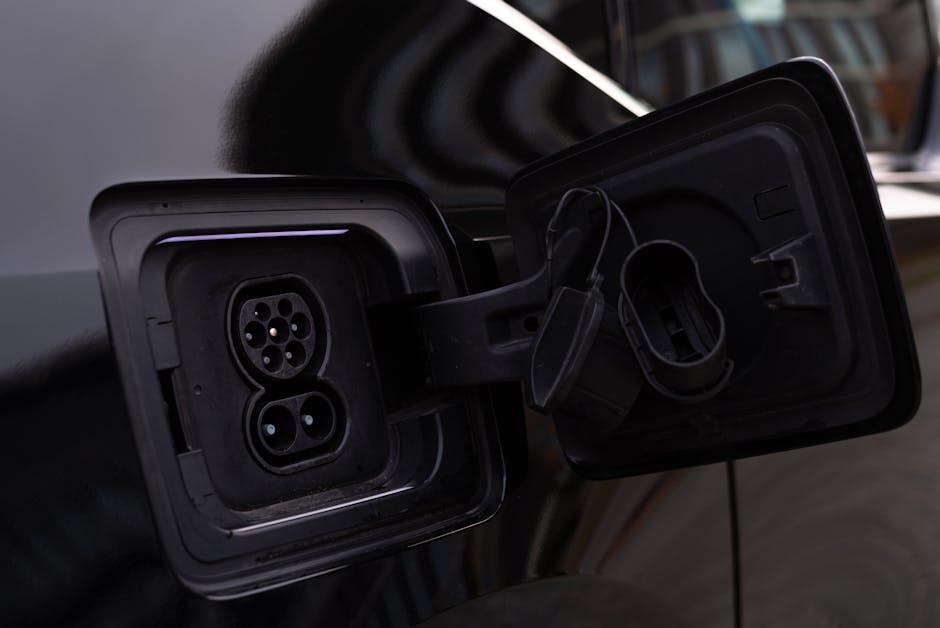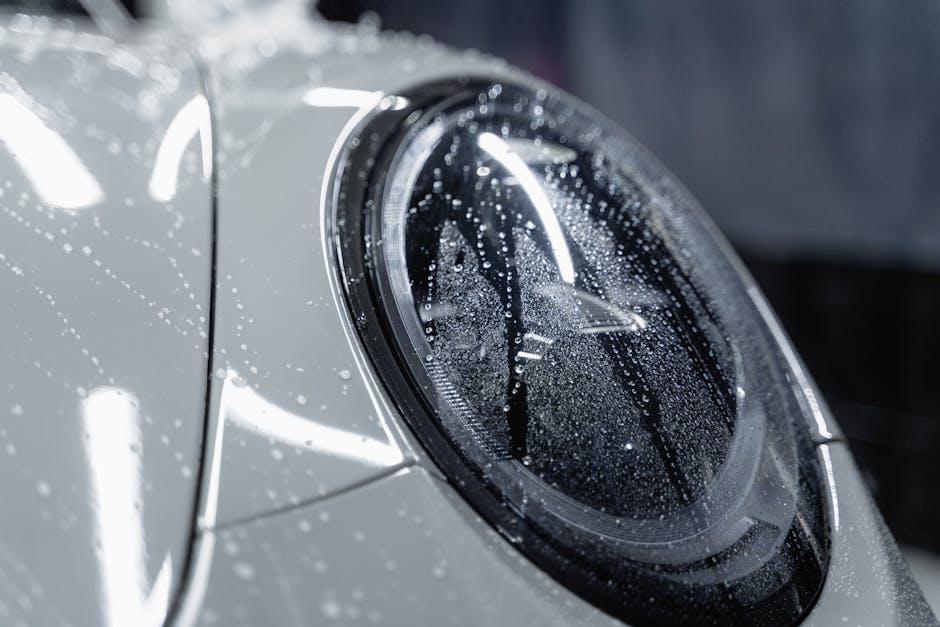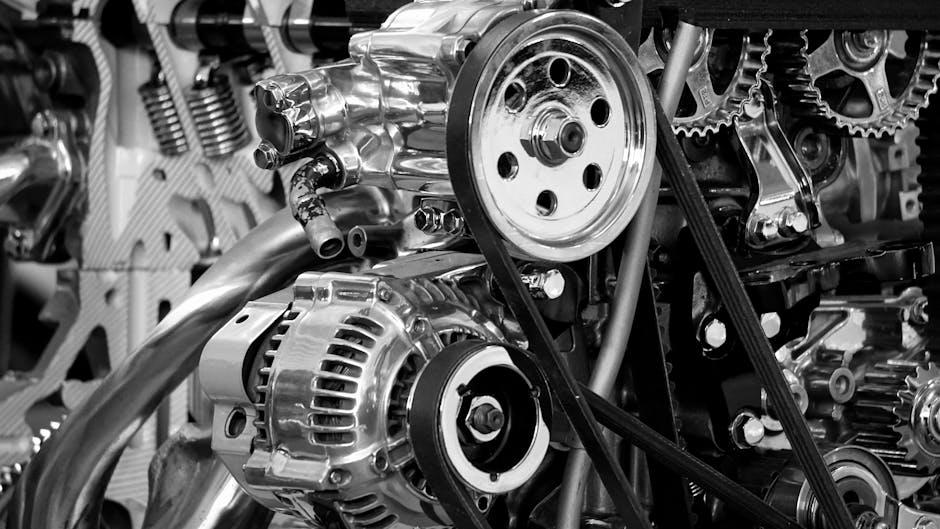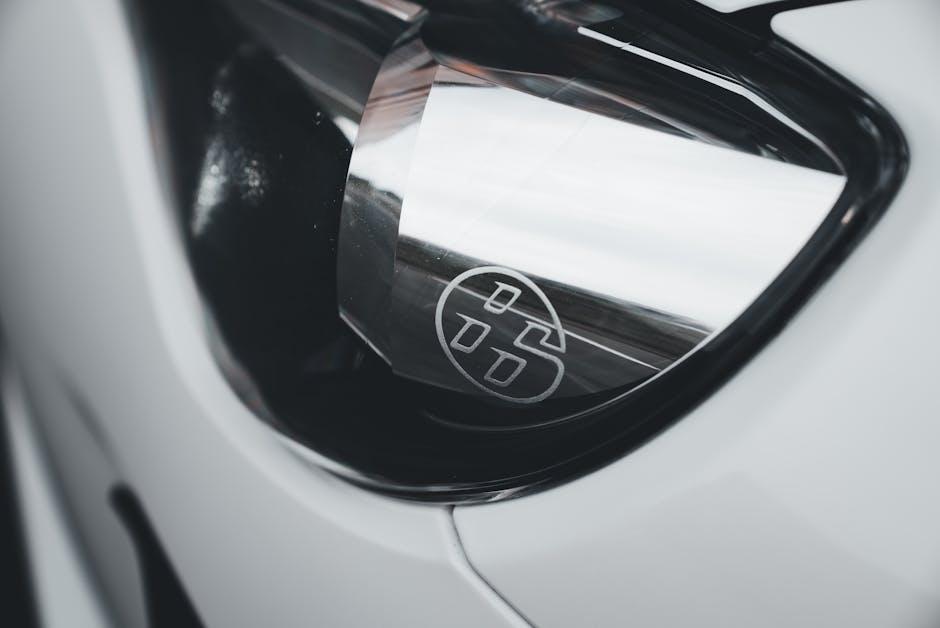There’s something unsettling about driving with flickering car lights. That rhythmic dance of dim and bright not only catches your eye but also signals that your vehicle might be whispering a warning. Flickering lights can stem from a variety of issues — from simple loose connections to more troublesome electrical faults. Understanding the common causes and knowing how to troubleshoot them can save you time, money, and perhaps even a roadside emergency. In this article, we’ll guide you through the practical steps to diagnose and fix flickering car lights, helping you restore steady illumination for safer journeys ahead.
Table of Contents
- Understanding the Common Causes of Flickering Car Lights
- Inspecting Electrical Connections for Loose or Corroded Wiring
- Diagnosing Faulty Headlight Bulbs and When to Replace Them
- Exploring the Role of the Alternator and Battery Health
- Step-by-Step Guide to Testing and Replacing the Light Switch
- Preventative Maintenance Tips to Keep Your Car Lights Steady and Reliable
- Q&A
- To Conclude

Understanding the Common Causes of Flickering Car Lights
Flickering car lights can be both a nuisance and a potential safety hazard. Often, the root causes are tied to electrical imbalances within the vehicle’s lighting system. A loose or corroded connection in the headlight wiring, for instance, can interrupt the flow of electricity, leading to inconsistent illumination. Similarly, aging bulbs or incorrect bulb types may strain the circuit, causing sporadic flickers. It’s important to note that sometimes the issue isn’t with the lights themselves but with the vehicle’s battery or alternator, which may fail to provide stable voltage.
Common culprits behind flickering often include:
- Faulty wiring or connections: Wires can fray or connectors corrode over time, disrupting power.
- Worn-out bulbs: Bulbs nearing the end of their lifespan may flicker before burning out.
- Alternator problems: A malfunctioning alternator can cause voltage fluctuations.
- Defective switches or relays: Age and wear can impair the function of control units.
| Cause | Typical Symptom | Fix Approach |
|---|---|---|
| Loose Wiring | Intermittent Flicker | Secure connectors |
| Old Bulb | Dim & Flickering | Replace bulb |
| Alternator Fault | Flicker with Engine RPM | Check/Replace alternator |
| Bad Switch | Lights Cut On/Off | Repair/Replace switch |

Inspecting Electrical Connections for Loose or Corroded Wiring
When addressing flickering car lights, one of the most overlooked culprits is often the electrical connections. These connections can become loose over time due to vibrations from driving or exposure to the elements. By carefully examining each terminal and connector, you can quickly identify potential trouble spots that might interrupt the steady flow of electricity to your headlights or taillights. Pay special attention to how snugly wires fit into their terminals—anything that wiggles or appears misaligned is a prime candidate for repair. Ensuring tight and secure connections will often restore consistent lighting without the need for costly replacements.
Corrosion forms another common issue, particularly in regions with high humidity or road salt usage. This buildup can create resistance and reduce electrical conductivity. Use a quality electrical contact cleaner along with a small brush to gently remove any grime, rust, or oxidation from the wiring and connectors. Keep an eye out for these warning signs:
- Greenish or white powdery deposits
- Discolored or brittle wires
- Foul odor near electrical junctions
- Intermittent or weak light output
| Connection Type | Inspection Tip | Action Needed |
|---|---|---|
| Battery Terminal | Check for corrosion buildup | Clean and tighten bolts |
| Headlight Plug | Ensure firm snap-in fit | Reconnect or replace clips |
| Fuse Box Contacts | Look for rust or discoloration | Apply contact cleaner |

Diagnosing Faulty Headlight Bulbs and When to Replace Them
When your headlights start flickering, the first culprit to consider is often the bulbs themselves. Over time, the filament inside the bulb can weaken and create inconsistent lighting, leading to noticeable flickering on the road. Check for signs like dimming, uneven glow, or physical damage to the bulb glass. A quick test is to gently wiggle the bulb inside its socket; if the flickering worsens or the light cuts in and out, it’s a strong indicator the bulb is nearing the end of its lifespan.
Knowing when to replace the bulbs is crucial for safe driving. As a rule of thumb, if you notice flickering, visible blackening inside the bulb, or if the light output is drastically reduced, it’s time for new bulbs. Use the table below as a guideline for common halogen and LED headlight bulbs and their average service life:
| Bulb Type | Average Lifespan | Replacement Indicator |
|---|---|---|
| Halogen | 450-1,000 hours | Frequent flickering, dim light |
| LED | 15,000-30,000 hours | Sudden flicker or blackout |
| HID/Xenon | 2,000-3,000 hours | Color shift, flickering |
- Always replace bulbs in pairs to ensure even lighting.
- Use gloves or a clean cloth to handle bulbs—oil and dirt can shorten their lifespan.
- Refer to your vehicle’s owner manual for specific bulb types and wattage.

Exploring the Role of the Alternator and Battery Health
When your car lights begin flickering, one of the first suspects to consider is the alternator. This critical component is responsible for powering your vehicle’s electrical system while the engine runs, maintaining a steady flow of electricity to the headlights and other electrical accessories. A failing alternator can cause inconsistent voltage output, leading to dimming or flickering lights. Symptoms of alternator issues might include unusual noises, a warning light on the dashboard, or fluctuating electrical performance. Regular diagnostic checks can help detect alternator inefficiencies before they escalate into more severe electrical failures.
Equally important to stable lighting is the health of your car battery. A weakened or old battery struggles to hold a charge and may contribute to intermittent power surges, causing your lights to flicker unexpectedly. Keeping tabs on your battery involves more than just visual inspection—it’s about measuring voltage levels and checking for corrosion on terminals. Here’s a quick checklist to maintain battery health:
- Check voltage regularly: Healthy batteries typically read between 12.4 and 12.7 volts when the engine is off.
- Inspect terminals: Clean off any corrosion to ensure a solid electrical connection.
- Test battery age: Batteries more than three years old should be tested or replaced proactively.
| Component | Symptom | Recommended Action |
|---|---|---|
| Alternator | Dim/Flickering Lights, Warning Indicator | Perform voltage output test, Inspect belts |
| Battery | Low Voltage, Corrosion on Terminals | Clean terminals, Replace if over 3 years old |

Step-by-Step Guide to Testing and Replacing the Light Switch
Begin by turning off your car’s ignition and disconnecting the battery to ensure safety. Locate the light switch, usually found on the dashboard or steering column. Use a screwdriver to gently remove the switch panel or cover, revealing the internal components. With a multimeter set to the continuity mode, test the switch by connecting the probes to the terminals; a continuous beep indicates a functioning switch, while no signal means it’s faulty. Before proceeding, also inspect for any visible signs of wear such as burnt contacts or corrosion that could cause flickering.
If the switch tests defective, replacing it is straightforward. Purchase an exact match for your car model and ensure compatibility. Disconnect the old switch’s wiring harness carefully, then plug in the new switch securely. Reattach the switch panel and reconnect the battery for a final check. Below is a quick reference guide to help you differentiate common issues you may encounter during the process:
| Symptom | Potential Cause | Recommended Action |
|---|---|---|
| Flickering at low speed | Loose wiring | Tighten connections |
| Lights cut out completely | Burnt switch contacts | Replace switch |
| Switch feels sticky | Dirt or moisture | Clean and dry switch |

Preventative Maintenance Tips to Keep Your Car Lights Steady and Reliable
Ensuring your car lights remain consistently bright starts with regular inspections. Check connections for corrosion or looseness, as these are common culprits behind erratic flickering. Pay special attention to the battery terminals and wiring harnesses, cleaning and tightening them as needed. Remember, even a slight disruption in electrical flow can cause your lights to behave unpredictably. Incorporating these quick visual checks into your routine can save you from unexpected darkness on the road.
Implement these maintenance habits for lasting reliability:
- Use dielectric grease on bulb sockets to prevent moisture build-up.
- Replace bulbs in pairs to maintain balanced lighting and prevent uneven wear.
- Inspect and replace worn-out fuses and relays promptly.
- Keep your car’s battery charged and terminals clean for optimum power delivery.
| Maintenance Item | Recommended Frequency | Impact on Light Performance |
|---|---|---|
| Bulb Socket Cleaning | Every 6 months | Prevents moisture and corrosion |
| Battery Terminal Check | Monthly | Ensures steady voltage flow |
| Fuse Inspection | Every 3 months | Maintains circuit reliability |
| Wiring Harness Review | Annually | Detects damage and wear |
Q&A
Q&A: How to Fix Flickering Car Lights
Q1: Why are my car lights flickering in the first place?
A1: Flickering car lights usually signal an inconsistent flow of electricity. Common causes include a weak battery, corroded or loose wiring connections, a failing alternator, or a faulty light bulb. It’s your vehicle’s way of saying, “Hey, something’s not quite right—check me out!”
Q2: Can I fix flickering lights myself, or do I need a mechanic?
A2: Many flickering light issues are DIY-friendly if you’re comfortable with basic car maintenance—think checking connections, swapping out bulbs, or tightening terminals. However, if the problem points to complex electrical systems or the alternator, seeking a professional’s help is the safer bet.
Q3: What’s the first step in diagnosing flickering headlights?
A3: Start with the simplest fix: inspect the bulbs. Remove and examine them for signs of damage or corrosion. Next, check the battery terminals and wiring harness for loose connections or grime. Clean and tighten where necessary before moving on to more intricate components.
Q4: How do dirty or corroded connectors cause flickering lights?
A4: Dirt and corrosion interfere with the smooth flow of electricity, causing intermittent power delivery. Like a clogged artery disrupts blood flow, these contaminants disrupt electrical current, leading to flickering or dimming lights.
Q5: Can a faulty alternator cause flickering car lights?
A5: Absolutely. The alternator charges your battery and powers electrical components while the engine runs. A failing alternator may supply inconsistent voltage, causing your headlights to flicker or dim, especially when electrical loads increase.
Q6: Are there any quick fixes to stabilize flickering headlights temporarily?
A6: Tightening loose battery or ground connections can often stop flickering immediately. Sometimes, replacing a worn-out bulb or cleaning the headlight socket provides a quick relief. But remember, these might only be temporary solutions until underlying issues are addressed.
Q7: How can I prevent flickering car lights in the future?
A7: Regular vehicle maintenance is key. Keep battery terminals clean, inspect wiring regularly, replace bulbs before they burn out, and have your alternator checked during routine tune-ups. Prevention is a smoother, safer drive without unexpected light shows.
Q8: Is flickering car lights dangerous while driving?
A8: Yes, flickering lights can compromise visibility and signaling, posing a safety risk especially at night or in poor weather conditions. Address flickering promptly to keep your drive safe and steady.
With these answers in hand, you’re empowered to tackle flickering car lights head-on—whether by a steady hand or a trusted mechanic’s expertise. Bright, reliable headlights aren’t just a convenience; they’re a must-have for every journey.
To Conclude
In the end, flickering car lights may seem like a small nuisance, but they hold the key to your safety and peace of mind on the road. By taking a systematic approach—checking connections, replacing bulbs, or consulting a professional—you can restore steady illumination and drive with confidence. Remember, a well-lit path is not just about seeing clearly; it’s about being seen. So, next time your lights dance with uncertainty, consider it an invitation to take charge and keep your journey brightly on track.

